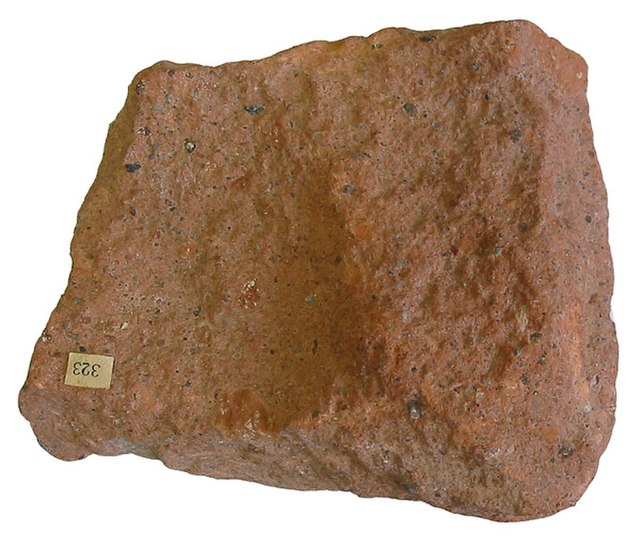Ignimbrite is a type of volcanic rock, consisting of hardened tuff. Ignimbrites form from the deposits of pyroclastic flows, which are a hot suspension of particles and gases flowing rapidly from a volcano, driven by being denser than the surrounding atmosphere. New Zealand geologist Patrick Marshall (1869–1950) coined the term ignimbrite from the Latin igni- [fire] and imbri- [rain].
Rocks from the Bishop tuff from California, United States, uncompressed with pumice on left; compressed with fiamme on right
The caprock in this photo is the ignimbrite layer of the Rattlesnake Formation in Oregon.
Rheomorphic flow structures in a welded ignimbrite, Isle of Lipari, Italy
A block of ignimbrite
Volcanic rocks are rocks formed from lava erupted from a volcano. Like all rock types, the concept of volcanic rock is artificial, and in nature volcanic rocks grade into hypabyssal and metamorphic rocks and constitute an important element of some sediments and sedimentary rocks. For these reasons, in geology, volcanics and shallow hypabyssal rocks are not always treated as distinct. In the context of Precambrian shield geology, the term "volcanic" is often applied to what are strictly metavolcanic rocks. Volcanic rocks and sediment that form from magma erupted into the air are called "pyroclastics," and these are also technically sedimentary rocks.
Ignimbrite, a volcanic rock deposited by pyroclastic flows
Photomicrograph of a volcanic lithic fragment (sand grain); upper picture is plane-polarized light, bottom picture is cross-polarized light, scale box at left-center is 0.25 millimeter.
An aphanitic volcanic sand grain, with fine-grained groundmass, as seen under a petrographic microscope
Vesicular olivine basalt from La Palma (green phenocrysts are olivine).







